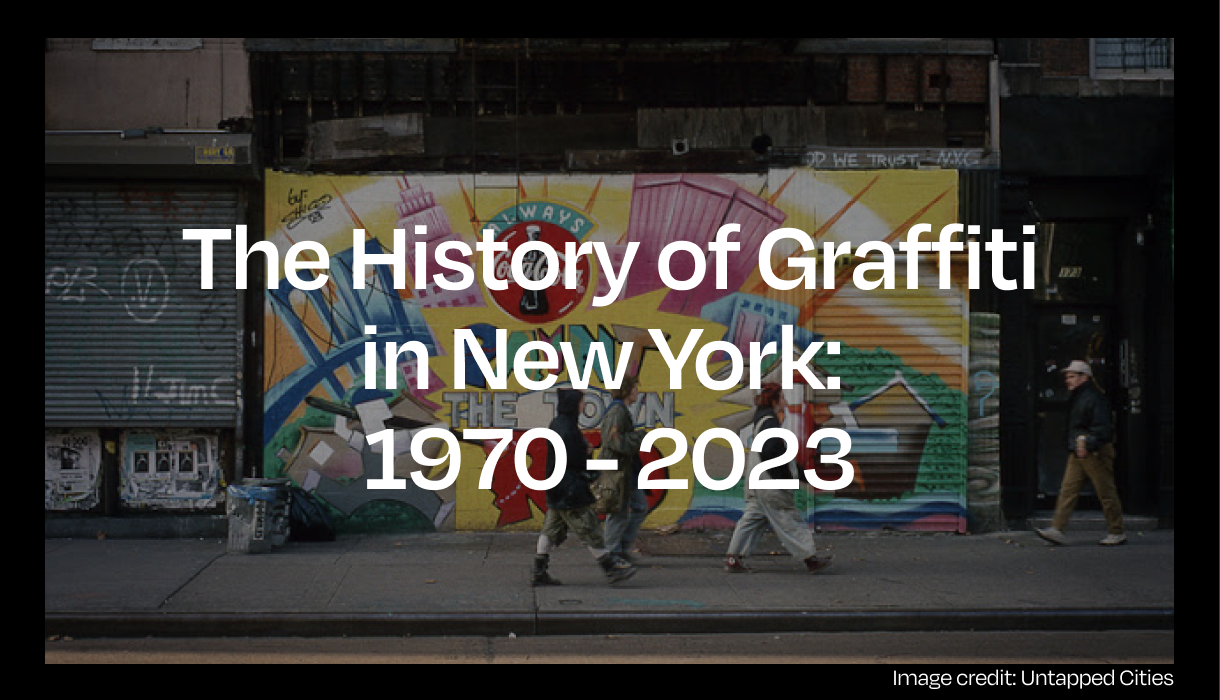
10 Popular Murals in Berlin
Berlin is known for its vibrant street art scene, and there are many famous murals throughout the city. The city is a treasure trove of colourful and captivating murals that adorn its streets, buildings, and public spaces. There are countless locations where you can immerse yourself in the world of street art and discover these remarkable creations. Berlin offers an endless array of locations to discover captivating murals. So grab a map, put on your walking shoes, and embark on an adventure looking for the best murals of Berlin.

1. East Side Gallery
The East Side Gallery, adorned by various artists, including Dmitri Vrubel, Svetlana Savelieva, and others, holds a profound historical significance. It encompasses a 1.3-kilometer-long section of the Berlin Wall, transformed into a global memorial for freedom. Following the momentous fall of the Berlin Wall in 1989, artists from diverse corners of the world were extended an invitation to contribute their creative voices to this remaining segment of the Wall. The East Side Gallery stands as a testament to the reunification of Germany and the conclusion of the Cold War, renowned for its potent artworks that convey powerful messages of hope and change.
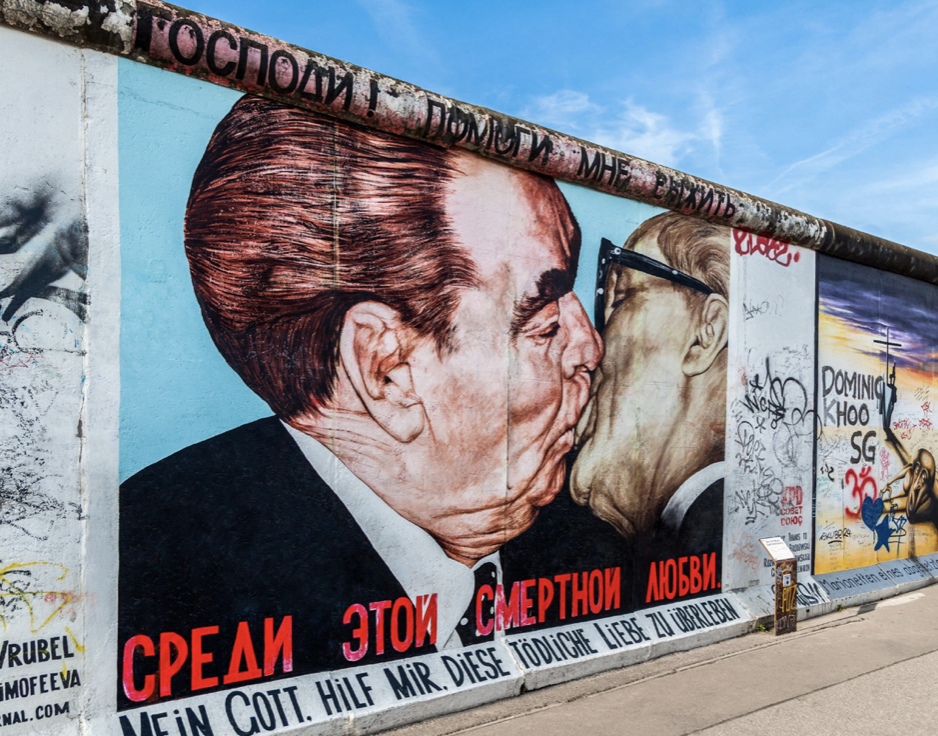
2. Astronaut Cosmonaut Mural
The “Astronaut Cosmonaut” mural by Victor Ash is a remarkable piece of street art that has captured the imagination of viewers since its creation. Located in Berlin, this mural stands as a striking symbol of unity and exploration in the midst of a historically divided city. Victor Ash, a renowned street artist known for his distinctive style, brought this mural to life in 2007.
At first glance, the mural depicts an enormous astronaut and cosmonaut side by side, seemingly suspended in the cosmic expanse. They are portrayed as equals, mirroring each other’s poses as they gaze towards the stars. This artwork carries profound symbolism, especially considering Berlin’s turbulent history as a divided city during the Cold War. The astronaut and cosmonaut serve as powerful representations of the space race era, where the United States and the Soviet Union were locked in a fierce competition to conquer the cosmos. Yet, this mural transcends rivalry and instead emphasizes the shared human aspiration for exploration and understanding.

3. The Pink Man
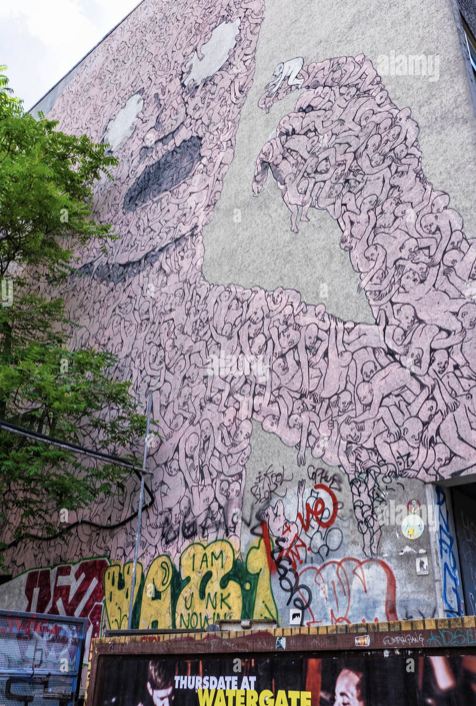
“The Pink Man” mural by the renowned street artist Blu in Berlin is a captivating and enigmatic piece of urban art that has garnered international attention for its thought-provoking imagery. Created in 2007, this mural stands as a testament to Blu’s unique artistic vision and his ability to use large-scale public art to convey complex ideas.
This mural shows a bunch of pink people all squished together, looking really upset. They all look the same, except for one person who’s a different color. That person is about to get lost in the crowd, just like everyone else. Some folks think this mural is a warning about everyone being too much alike and not being themselves. The pink people seem confused and sad, not knowing why they’re stuck there or what they’re doing. It’s a bit spooky and makes you think about Berlin and Germany’s past. People really like this mural because it reminds us that it’s not good when everyone tries to be exactly the same.
4. Otto Weidt’s Tribute Mural
A tribute to Otto Weidt (May 2, 1883 – December 22, 1947) who was the proprietor of a workshop in Berlin catering to blind and deaf individuals. Amidst the Holocaust, he valiantly shielded his Jewish employees from deportation, earning recognition as one of the Righteous Among the Nations. The Otto Weidt Workshop for the Blind Museum still stands at the factory’s original location, serving as a tribute to his life and legacy.
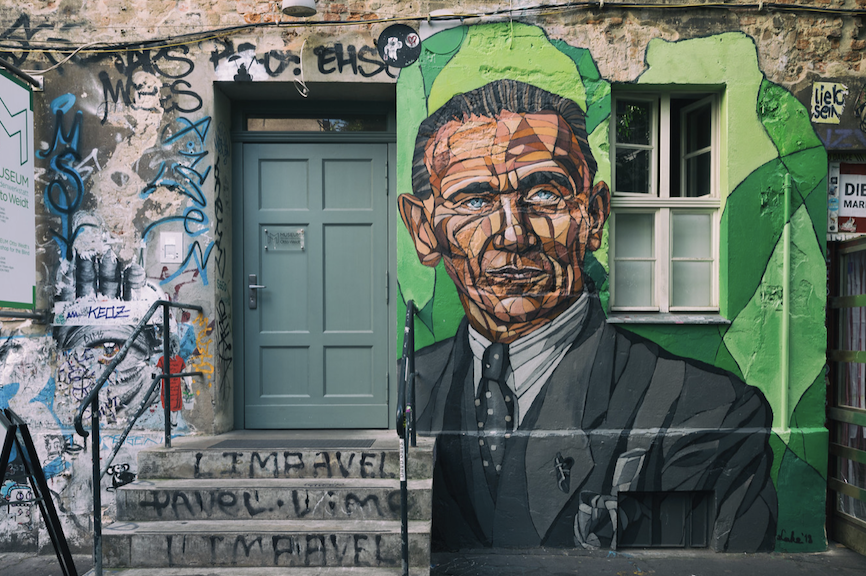
5. Anne Frank Mural
James Cochran, a highly esteemed Australian artist renowned for his portraits and narrative paintings, has left an indelible mark on the art world. Reflecting on his creative process for crafting a mural, Cochran expressed, “When I read some of the writings of Anne Frank, I realised too that she was an artist, a writer, who just wanted to pursue her talent and realise her dreams. I hope that I can give new meaning and colour to her portrait with the spray can.”
The Anne Frank Zentrum offers a rich tapestry of interactive experiences, video interviews, photographs, an authentic copy of Anne Frank’s original diary, and informative panels dedicated to disseminating knowledge about her remarkable life. Cochran’s warm and inviting portrait of Anne Frank, complemented by the surrounding artworks, serves as a creative means of commemorating history while extending an invitation to the public to engage with Berlin’s distinctive street art culture.
These street art projects sponsored by initiatives like Cochran’s embody undeniable positive influences. They possess the capacity to heighten awareness of politically and socially significant issues, represent various facets of communities, pay homage to the historical or personal significance of locations and individuals, and underscore the intrinsic value of art and self-expression.
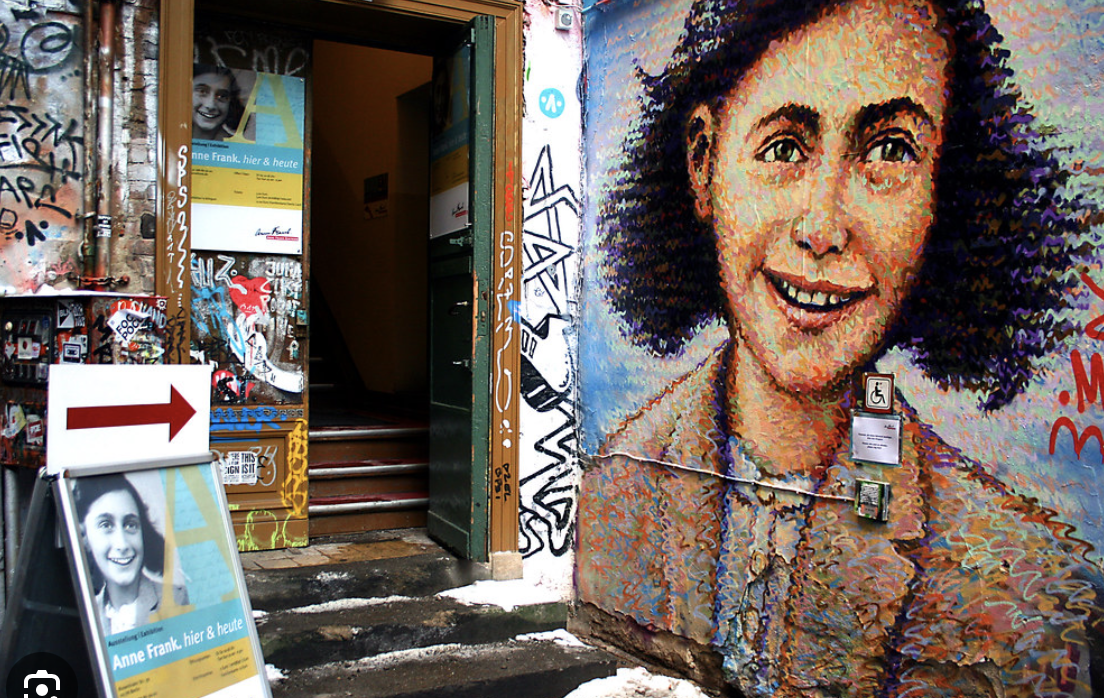
6. Wrinkles of the City
The “Wrinkles of the City” exhibition in Berlin compels its residents to reflect on the trials and tribulations faced by their elderly population, some of whom lived through World War II and the Berlin Wall era—a profoundly challenging and impactful period in Berlin’s history. Through these paste-up portraits of the elderly, Berliners are confronted with the memory of the horrors, devastation, and attempted genocide of World War II, as well as the division of their city during the Berlin Wall era. This serves as a poignant reminder of how the elderly not only survived but also contributed to these historic events.
While most of the paste-up artworks may have disappeared with time, their lasting impact on the city remains indelible. Remembering history holds significance for everyone, but it bears particular weight for Berliners and all Germans, as it prompts introspection about their historical role and the path they envision for the future. JR’s “Wrinkles of the City” exhibition serves as a catalyst for this essential reflection in Berlin, inviting its residents to consider their place in history and the legacy they hope to leave behind.
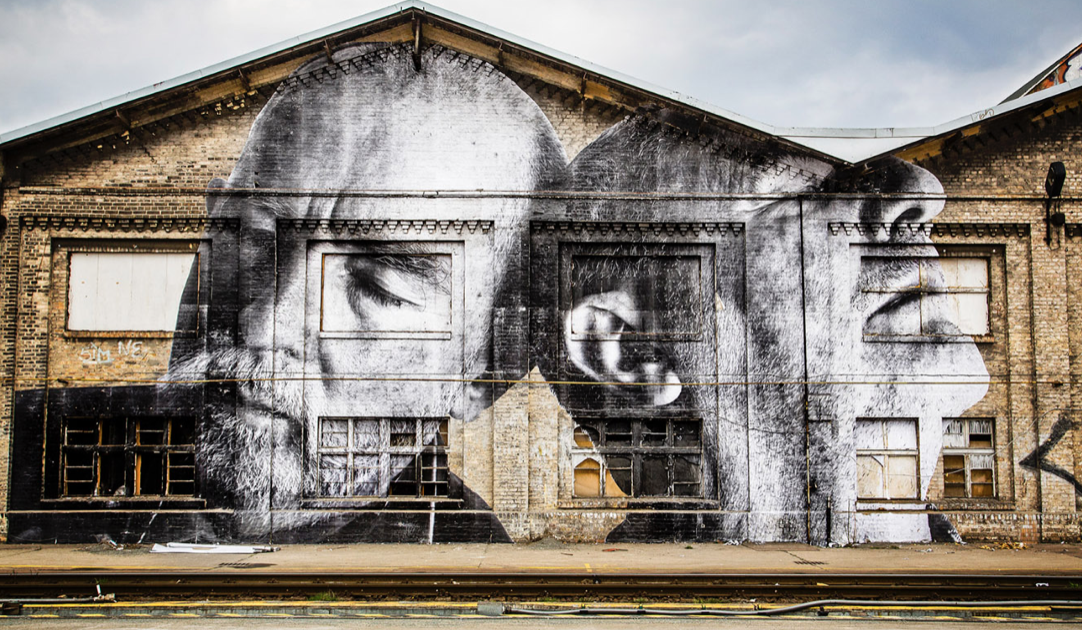
7. Alias’s Berlin Murals
Alias possesses a unique talent for seamlessly integrating his murals in Berlin into the cityscape, making them an organic part of Berlin rather than mere additions to it. He skilfully utilises elements like fences, bars, and architectural features of buildings to enhance his artwork’s impact. Notably, many of his pieces intentionally omit facial features, yet they remain emotionally relatable, tapping into universal aspects of the human experience and emotion without relying on explicit facial expressions.
Most of Alias’s work is executed using stencils, predominantly in a black and white palette, although he occasionally incorporates strategically placed red accents to infuse his pieces with a heightened intensity. In an article celebrating Berlin’s finest street artists, Alias’s ability to forge connections with strangers through his art is highlighted, as his solitary, melancholic figures elicit powerful emotional responses from passersby, sparking compassion and empathy on a deeply human level.
While newer works from Alias may be less prevalent on Berlin’s streets today, his existing pieces continue to be cherished by street art enthusiasts and everyday individuals who chance upon them, serving as enduring testaments to his unique ability to evoke profound emotions and foster connections through his urban artistry.
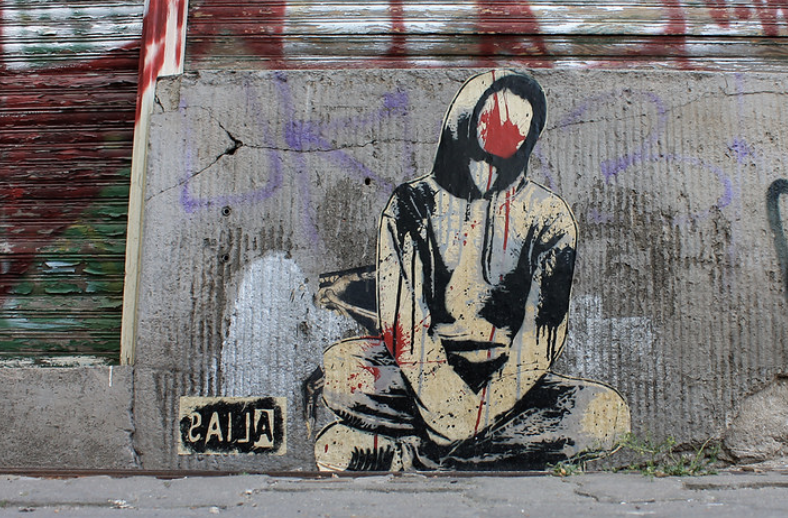
8. 2023 Honorary Eliud Kipchoge Mural
Hailing from Ghent, Belgium, ROA is renowned for his large-scale murals in Berlin featuring native wild and urban animals and birds that are indigenous to the specific country or region where he creates his art. His paintings adhere exclusively to a conservative colour palette of black, white, or grey, primarily executed using aerosol spray cans. ROA’s artistic themes delve deeply into the concepts of mortality and decay, often portraying deceased or decaying animal carcasses as a poignant reflection of the transient nature of both human life and street art, which is inherently impermanent due to its exposure to the elements. Notably, the mural on Oranienstrasse was commissioned by Skalitzers Contemporary Art in 2011 as part of the Transit exhibition.
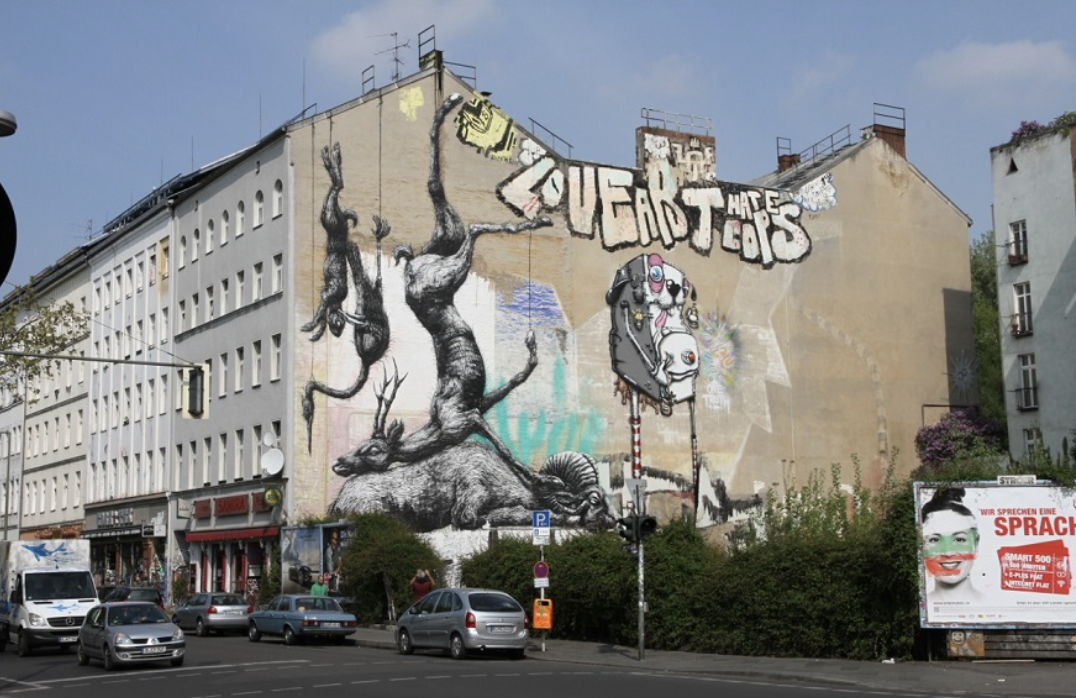
9. Israel/Palestine Mural
Shepard Fairey is a seasoned presence in the street art arena, globally renowned for his distinct style and his knack for channeling his views on critical social and political matters through his artistry.
Furthermore, Berlin has long been familiar with Fairey’s artistic contributions. He has adorned the city with multiple murals, each bearing his unmistakable aesthetic. Notably, his impactful style even captured the attention of former United States President Barack Obama, who famously commissioned Fairey to design his iconic “hope” poster. Nevertheless, if one were to single out a particular piece of his Berlin portfolio, it would undoubtedly be the two expansive murals situated along Bulowstrasse, aptly titled “Israel/Palestine.”
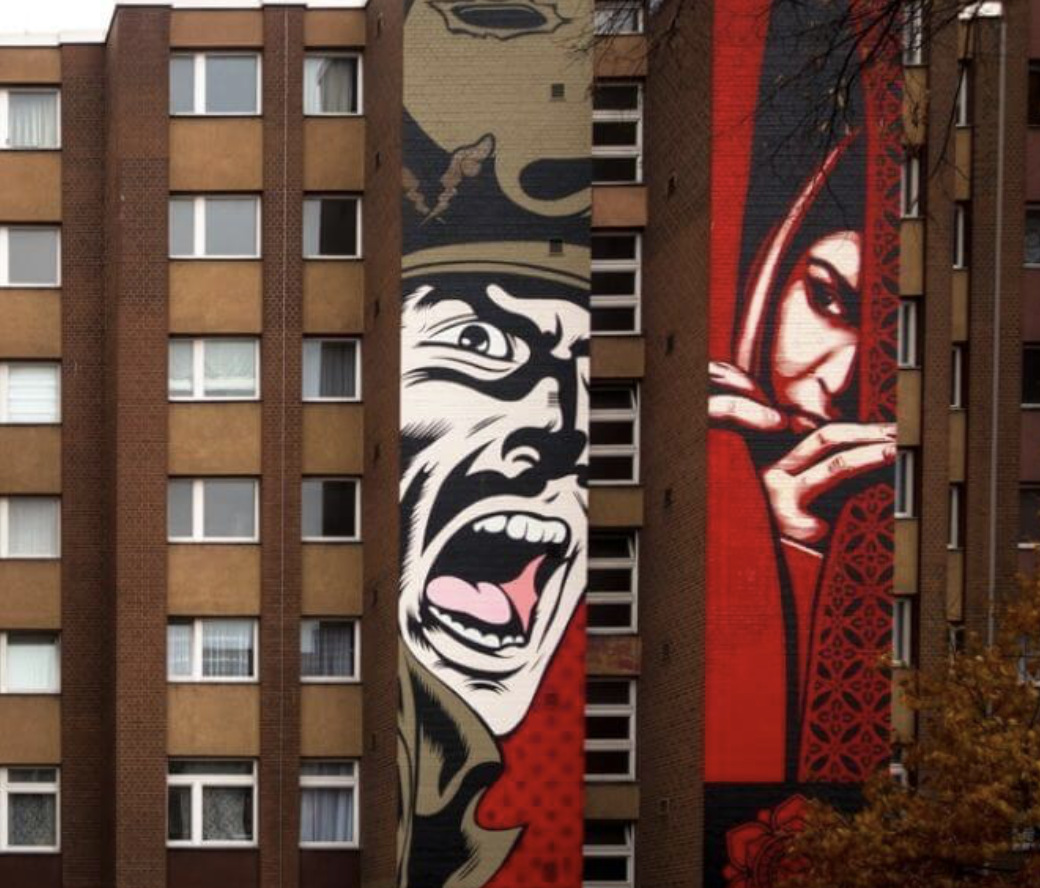
10. Huzur
Not so much a mural in the traditional sense, but a must see artwork nevertheless. “Huzur” serves as a powerful statement addressing the social challenges that have plagued the infamous Bulowstrasse over the years, including issues related to drugs, prostitution, and crime. Collaboratively crafted by Selfmadecrew in partnership with the Urban Nation Museum, it represents a concerted effort to bring about positive change.

“Huzur” features the silhouettes of four residents, meticulously crafted using brown tape on a window. What sets this artwork apart from other murals in Berlin is its uniqueness: it can only be fully appreciated under the cover of darkness.
How is this possible, you may wonder? As the sun sets and the lights within the building at Bulowstrasse 94 illuminate, the artwork undergoes a stunning transformation. In the night’s embrace, it comes alive, revealing four distinct faces formed by an interplay of shadows and light. This hidden gem serves as a potent reminder that even in the midst of the Bulowstrasse’s challenges, positive change can emerge under the cover of night, demonstrating the profound impact of art on urban landscapes.
Check out top-rated local artists near you!
Are you an artist ? Sign Up











